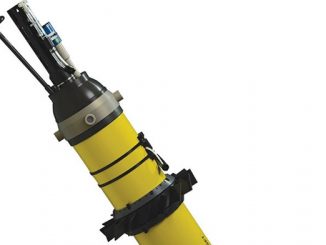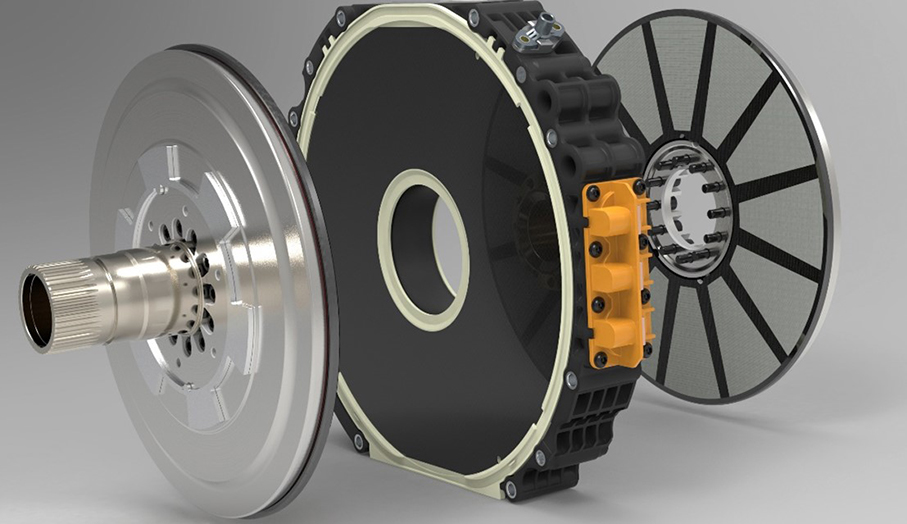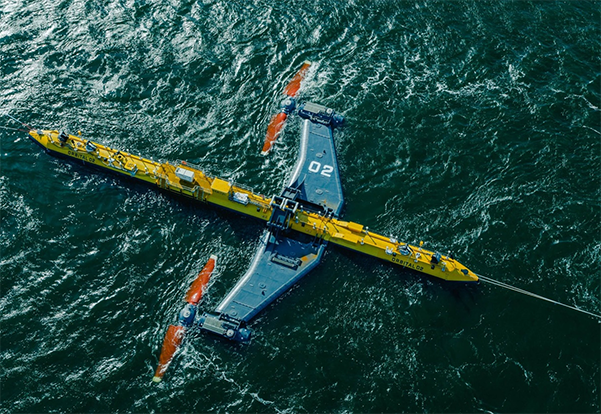
Tidal power holds a lot of promise for generating clean energy. As with power from the wind, it can require a lot of engineering and magnets to harness.
This spring that promise stepped closer to reality when Orbital Marine Power Ltd, a Scottish-based developer of floating tidal turbine technology, successfully launched its 2MW tidal turbine, the Orbital O2. The 680-ton turbine was towed from the Port of Dundee on April 22 to waters offshore Orkney Island.
Onboard are two permanent-magnet powertrains developed by SKF, representing a departure from the company’s traditional business of manufacturing bearings, including many magnetic versions, for industrial equipment around the world. About 15 meters below the O2’s superstructure, the powertrains are attached on two wing-like legs.
Now comes a period of onsite testing to determine if the innovative system can deliver according to expectations. On July 28, it commenced generating power to the grid at the European Marine Energy Centre at Orkney, becoming the world’s most powerful operational tidal turbine.
Strong currents arise where the ebb and flow of tide squeeze between islands. These are particularly powerful off the Orkney Islands, which is why experiments with tidal current power plants have been carried out here for several years at EMEC which has become Europe’s leading test site for tidal and wave energy projects.
“This is a huge milestone for Orbital,” noted Andrew Scott, CEO. The O2 turbine started construction in the second half of 2019. It is designed to generate enough clean, predictable electricity to meet the demand of around 2,000 UK homes and offset approximately 2,200 tons of CO2 production per year.
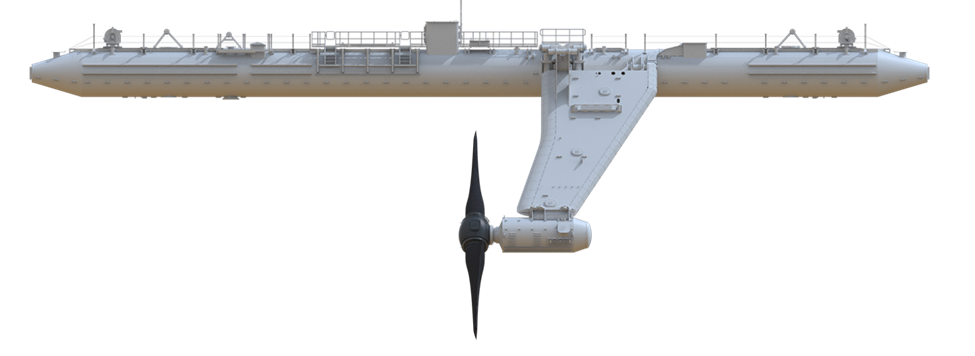
The turbine has a 74m long hull structure with twin 1MW power generating nacelles at the end of retractable leg structures designed to give low-cost access to all major components for through life servicing. The floating structure is held on station with a four-point mooring system where each mooring chain has the capacity to lift over 50 double decker buses. Electricity is transferred from the turbine via a dynamic cable to the seabed and a static cable along the seabed to the local onshore electricity network.
The O2 is Orbital’s first commercial demonstrator and represents the culmination of more than 15 years of product development and testing in Orkney. It is envisaged that the O2 will become the basis for first commercial sales of the technology. “Commercializing our product will create an entirely new global market for power generation equipment and services,” says Scott.
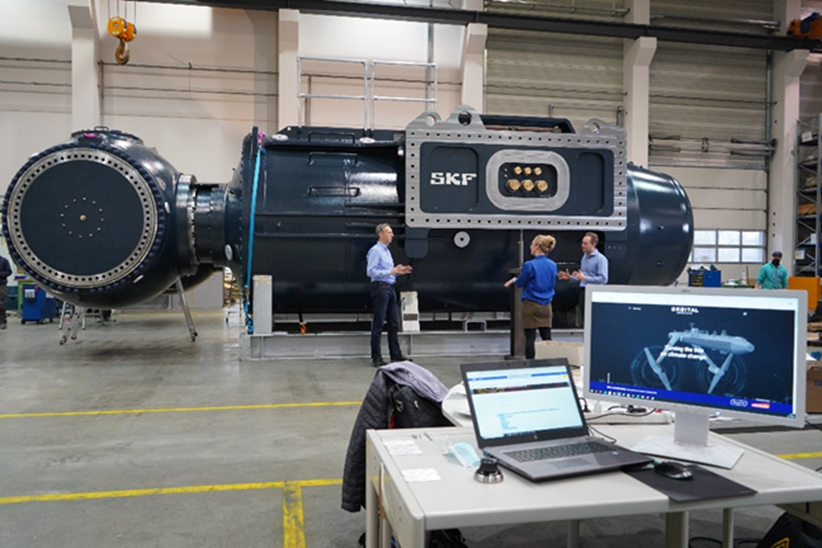
SKF is a key supplier for O2, contracted to provide the fully integrated powertrains as well as the blade pitching hubs. Orbital has been working with the Swedish firm for the supply of critical bearing and sealing components since 2011, in both its 250kW unit and the SR2000-2MW unit which produced more than 3GWh of electricity over its initial 12-month test program.
However, the commercial supply arrangement for the O2 2MW turbine is a departure from the historical component supply model to one where SKF is providing Orbital fully integrated drivetrain solutions covering both nacelles and pitching hubs.
“We are a technical partner to advanced tidal turbine device developers for almost a decade now and are delighted that our long-term partnership with Orbital evolves to the next major step from providing main mechanical sub-systems to fully integrated power train solutions,” notes Michael Baumann, business development manager for marine and ocean energy at SKF. “We see tremendous potential for floating tidal technology due to its low installation and operating costs.”
Thomas Frost, president for industrial technologies at SKF adds: “We have almost a decade’s worth of experience of being a technical partner to developers of advanced tidal turbine technologies. By now taking the step from being a mechanical component supplier to supplying fully integrated power trains, we strengthen our position and focus on supporting selected cleantech industries.”
With rotor diameters of 20m, O2 has a total rotor area of 600 square meters, the largest ever on a single tidal turbine to date. It has 360-degree blade pitching for dynamic control of the rotors that enable power to be captured from both tidal directions, eliminating the need to rotate the entire platform.


